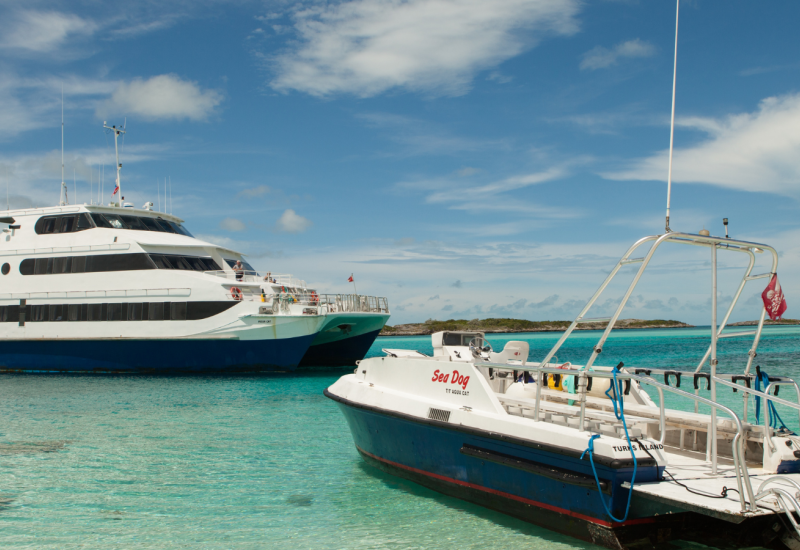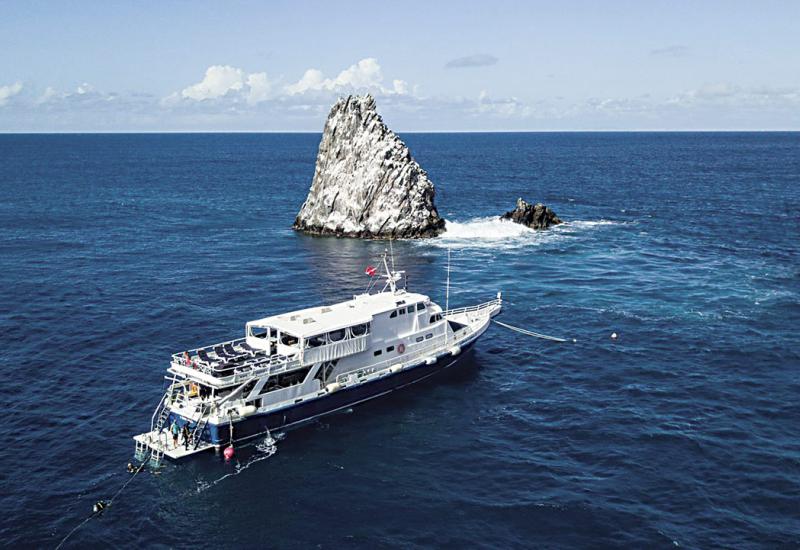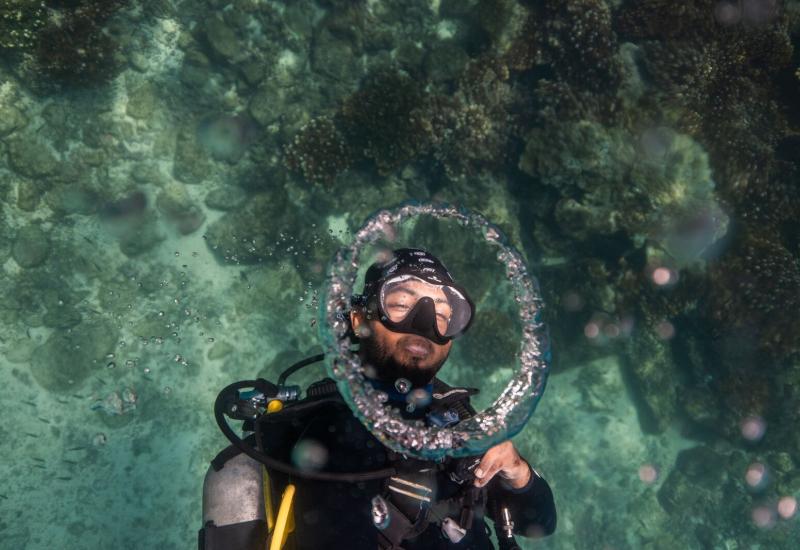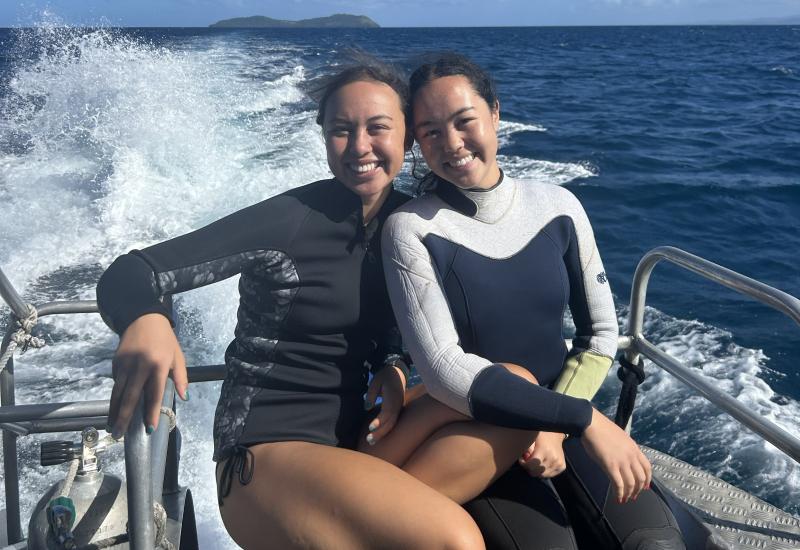The ABCs of Liveaboards

Aggressor LiveaboardsIndo Aggressor is a traditional phinisi boat that travels as a motorized yacht. It visits Komodo National Park, a World Heritage Site that was initially established to conserve the unique Komodo dragon.
As convenient as they are adventure-filled, when it comes to dive travel, liveaboards can’t be beat. From visiting far-flung isles to diving up to five times per day, here are just some of the many reasons to consider a liveaboard when booking your next dive vacation.
You Can Reach Remote, Exotic Locations.
Liveaboards give divers the chance to see exclusive seascapes.
“Some destinations, like Cocos Island, Jardines de la Reina, or Wolf and Darwin in the Galapagos, could never be visited except on a liveaboard, due to their distance from any mainland,” says Wayne Brown, CEO of Aggressor Liveaboards. “Liveaboards have brought thousands of divers to discover remote areas that they would otherwise never have the chance to enjoy.”
Sandro Lonardi, head of marketing for PADI Travel, adds: “With a liveaboard, you’ll usually explore a much bigger area, compared to staying in a single location, and you’ll be diving in the best dive sites the whole area has to offer, not just the ones you can reach from shore.”
You’ll See More of Closer-to-Home Destinations.
If you want to maximize dive time and see as much of a location as possible, booking a liveaboard is the way to go, even for easily accessible destinations.
“Most liveaboards usually have four to five dives a day. Whereas if you’re staying land-based, it’s usually maxed at three,” says Cammie Akins, vice president of Caradonna Adventures. “If you choose a liveaboard like Cayman Aggressor IV, you get to experience Grand Cayman, Little Cayman and Cayman Brac, so you see more than one destination in one trip. And you get all that diving in.”
And whether you’re eating, sleeping or just enjoying the sun deck on a surface interval, on a liveaboard, you’re always en route to your next dive site.

Aggressor LiveaboardsThe best liveaboard vacations combine mindblowing underwater encounters, incredible topside experiences and five-star valet service.
The Range of Diving is Phenomenal.
“Deeper diving, shallow diving, reef, wreck, wall — it totally depends on the destination, but there’s a huge variety,” says Akins.
Many liveaboard companies create tailored itineraries to ensure you don’t miss out on bucket-list dive sites, seasonal animal migrations and specialties like wreck or tec diving.
“You have liveaboard trips that are specific for seeing manta rays, like in Socorro, for example, or seeing great white sharks, like in Guadalupe,” says Lonardi. “Then there are itineraries specifically designed for wrecks, like in the Red Sea.”
Plus, he says, “On a liveaboard, you stop in various parts of the country or region, and you can hand-pick the best diving and only go to the really remarkable places.”
You Can Have Amazing Topside Experiences.
For many destinations, culture is as big a draw as the underwater world. On most liveaboard itineraries, there are one or two options to put your feet on land, from a seaside picnic to a short hike up a mountain.
But, says Brown, “to really experience a destination’s cultural side, you need more than an hour or two. Most of our guests either go a couple of days early or stay after the charter so they can immerse themselves with the locals.”
“We always recommend adding on a pre- or a post-stay,” adds Akins. “As long as you paid the money for the airfare, you might as well experience more of what the destination has to offer.”
It Can be a More Cost-Effective Getaway.
Although the price of a liveaboard can seem steep, when costs are broken down, it can actually be a bargain.
The price of a typical liveaboard includes your accommodations, food and drinks for the week, and all of your diving, which Akins says is the biggest difference from a resort stay.
“Land-based trips are going to have three dives, maybe four,” she says. “The cost of that, of course, can get more and more expensive, where it’s all included on a liveaboard.”
Brown echoes Akins: “If you added up all the costs involved in a landbased operation, including the huge number of dives we offer during our charters, our week aboard — which includes beer and wine — is significantly less expensive.”

Aggressor LiveaboardsRelax at sea with an unobstructed view of the sunset.
You’ll Love the Eat-Sleep-Dive Cycle.
Ultraconvenient diving and outstanding hospitality take the hassle out of your vacation. There’s no commuting from a resort to a dive shop or fussing with your gear before and after each dive — just wake up and alternate between exploring pristine dive sites and eating five-star food before it’s time to sleep again.
The crew will handle everything from setting up your kit before you get in the water to greeting you with a fresh towel post-dive, not to mention catering to your every need during surface intervals, including serving post-dive snacks and drinks.
“Even the first-time guests who worry about being on board all week have been converted by midweek,” Brown says, when they realize “this is the only way to go scuba diving.”
Before You Book, Ask these Questions about the Vessel
Are bathrooms in each stateroom? If not, make sure you’ll be comfortable sharing one with other guests.
Will I have a roommate? Some liveaboards try to fill every bed, so there’s a chance you’ll be sharing accommodations with a stranger. On some yachts, you may be able to pay a higher fee to ensure a single occupancy berth, but if not, you’ll find that nearly 100 percent of the time, sharing a cabin is not a problem.
How big are the cabins? Find out how much storage space you’ll have, both in your berth and at your gear station.
Can I make special food requests? Allergies and dietary restrictions can usually be accommodated if you make them clear when you’re booking.
What’s not included? Airport transfers, gratuity and equipment rentals are among common fees that aren’t covered in the price of the trip.
What is the cancellation policy? Take note of “cancel by” dates in case something comes up that forces you to cancel your vacation.
What courses are offered on board? Qualified instructors offer guests the opportunity to advance their training on the high seas.
What will the air and water temperatures be? Pack the proper topside clothes and underwater thermal protection to maximize comfort.
What are the perks of the boat? From free Wi-Fi to morning coffee delivered to your berth; warm, fluffy towels offered after every dive; chef-prepared meals; unlimited beer and wine; and onboard massage services, some liveaboards will make you consider becoming a stowaway.
When is the best time for a specific encounter? Avoid disappointment. If you’ve traveled thousands of miles hoping to see a bucket-list animal, such as a manta ray, make sure the trip you’re booking is scheduled at the appropriate time. Seasonal migrations, in particular, mean different animals are present at different times of the year.










